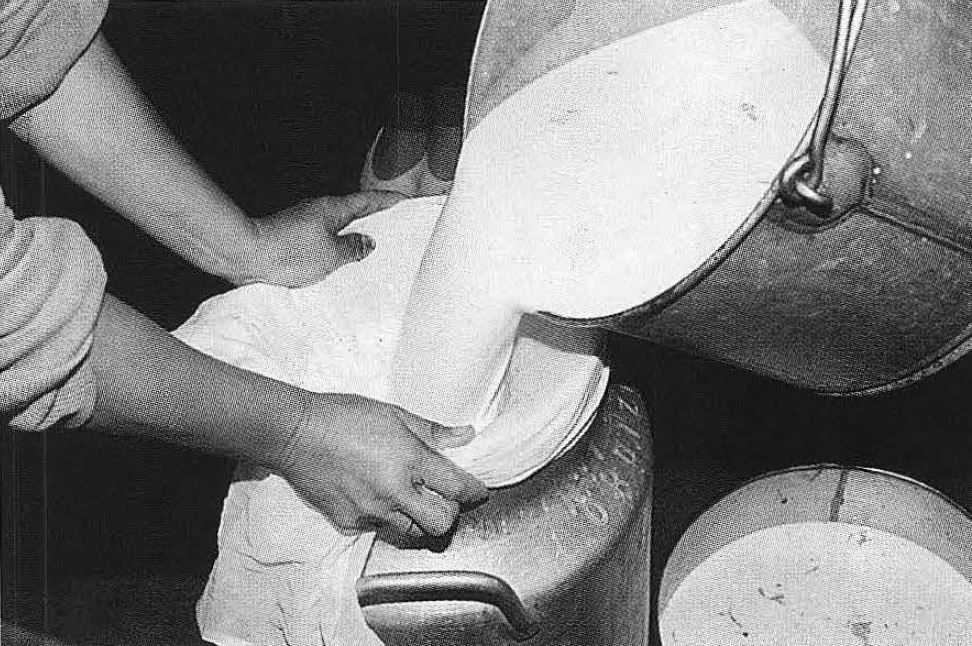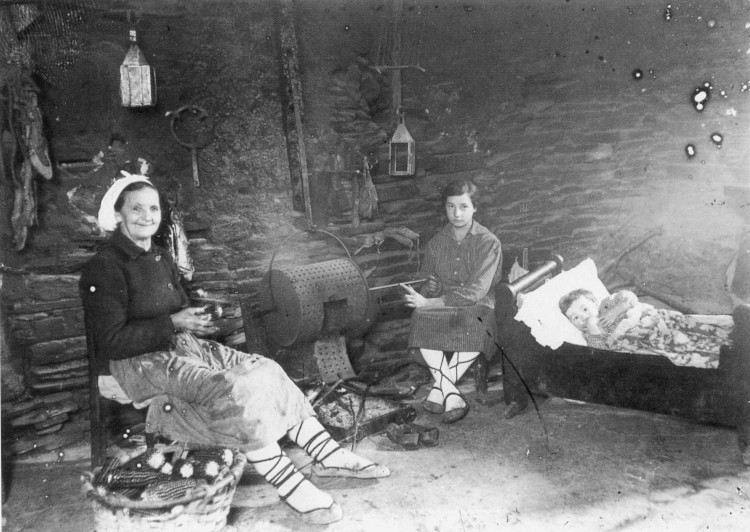Diferencia entre revisiones de «Alimentacion domestica en vasconia/en»
De Atlas Etnográfico de Vasconia
| (No se muestran 26 ediciones intermedias de 2 usuarios) | |||
| Línea 1: | Línea 1: | ||
| + | _LABAYRU_LANDING_ | ||
<languages></languages> | <languages></languages> | ||
| − | |||
| − | + | {{DISPLAYTITLE: Family Diet in the Basque Country}} {{#bookTitle:Family Diet in the Basque Country | Alimentacion_domestica_en_vasconia/en}} | |
| + | |||
==[landing]== | ==[landing]== | ||
| − | ===[alimentacion|Family Diet in the Basque Country|/atlas/alimentacion.png| | + | ===[alimentacion|Family Diet in the Basque Country|/atlas/alimentacion.png|Food and eating habits in the family, ritual meals, celebrations and lifestyles.]=== |
====[Alimentacion_domestica_en_vasconia | Family Diet in the Basque Country]==== | ====[Alimentacion_domestica_en_vasconia | Family Diet in the Basque Country]==== | ||
| − | ====[/atlas/alimentacion/Odol-usten.jpg|Pig bleeding. Source: José Zufiaurre, Etniker Euskalerria Groups.|''Odolosteak ordeaz.''<br /><br /> Neighbours and relatives are given black puddings and other pork cuts as a gift at pig slaughter time. It is an act of courtesy, an expression of the close bond shared with them, and part of an established exchange ritual.|]==== | + | |
| − | ====[/atlas/alimentacion/Erraria-hornada-de-pan-Caserio-Ariztimuno-Onati-1995.jpg|Bread baking. Ariztimuño Farmhouse. Oñati (G), 1955. Source: Antxon Aguirre, Etniker Euskalerria Groups.|Ogi erre berri, etxe galgarri. <br />''Soft bread at home, an unruly household.''|]==== | + | |
| + | ====[/atlas/alimentacion/Odol-usten.jpg|Pig bleeding. Source: José Zufiaurre, Etniker Euskalerria Groups.|''Odolosteak ordeaz.''<br /><br /> Neighbours and relatives are given black puddings and other pork cuts as a gift at pig slaughter time. It is an act of courtesy, an expression of the close bond shared with them, and part of an established exchange ritual.|]==== | ||
| + | |||
| + | ====[/atlas/alimentacion/Erraria-hornada-de-pan-Caserio-Ariztimuno-Onati-1995.jpg|Bread baking. Ariztimuño Farmhouse. Oñati (G), 1955. Source: Antxon Aguirre, Etniker Euskalerria Groups.|Ogi erre berri, etxe galgarri. <br />''Soft bread at home, an unruly household.''|]==== | ||
| + | |||
====[/atlas/alimentacion/Labartoa.jpg|Bushel of maize grain. Source: Ander Manterola, Etniker Euskalerria Groups.|Maize, introduced in the 17th century, and potatoes, in the 19th, would revolutionise the Basque diet.|]==== | ====[/atlas/alimentacion/Labartoa.jpg|Bushel of maize grain. Source: Ander Manterola, Etniker Euskalerria Groups.|Maize, introduced in the 17th century, and potatoes, in the 19th, would revolutionise the Basque diet.|]==== | ||
| + | ====[/atlas/alimentacion/Dando-brillo-al-pan.jpg|Brushing the loaves for a shiny crust. Source: Ander Manterola, Etniker Euskalerria Groups.|Nolako irina, halako ogia.<br /> | ||
| + | ''Bad flour makes poor dough.''||]==== | ||
| − | ====[/atlas/alimentacion/ | + | ====[/atlas/alimentacion/Mercado-de-Navidad-Vitoria-Gasteiz-1977.jpg|Christmas market. Vitoria-Gasteiz, 1977. Source: Fernando Díaz de Corcuera, Etniker Euskalerria Groups.|Aza-olioak pil-pil, <br />bisigua zirt-zart, <br />gaztaina erreak pin-pan, <br />ahia goxo-goxo, epel-epel. <br /><br />''Traditional Christmas song''||]==== |
| − | '' | ||
| − | ====[/atlas/alimentacion/ | + | ====[/atlas/alimentacion/Secado-Ispoure.jpg|Hanging for drying. Izpura (NB). Source: Peio Goïty, Etniker Euskalerria Groups.|Ezkonduko urtea eta txarria hildako astea, onenak. <br />''The year when you marry and the week that pig is slaughtered are the best.''||]==== |
| − | ====[/atlas/alimentacion/ | + | ====[/atlas/alimentacion/Abriendo-los-cortes-tras-la-fermentacion.jpg|Scoring after fermentation. Source: Ander Manterola, Etniker Euskalerria Groups.|Donde no hay ni pan ni pollos, el horno no está para bollos. <br />''If there’s no bread or chicken, you shouldn’t bake rolls.''||]==== |
| − | '' | ||
| − | ====[/atlas/alimentacion/ | + | ====[/atlas/alimentacion/Merienda-principios-del-siglo-20.jpg|Snack break, beginning of the 20th century. Source: Archive of the Chartered Government of Gipuzkoa: Indalecio Ojanguren Collection.|Goseak dagonarentzat, ogi gogorrik ez. <br />''The famished make a feast out of bread crumbs.''||]==== |
| − | ====[/atlas/alimentacion/ | + | ====[/atlas/alimentacion/Mercado_de_la_Ribera._Bilbao_principios_de_siglo.jpg|Ribera Market. Bilbao, beginning of the 20th century. Source: Labayru Fundazioa Photograhic Archive.|Food was grown on the family small holding or bought from local markets, which, in turn, were supplied with food grown locally. A few products, nearly always non-staples, complemented local or household self-supply.||]==== |
| − | ====[/atlas/alimentacion/ | + | ====[/atlas/alimentacion/Comida-a-bordo.jpg|Meal on board. Source: Aguirre Archive.|Nahiz dala udea, <br />nahiz dala negua, <br />goizeko zortziretan, <br />armozu ordua. <br /><>br />''Folk song''||]==== |
| − | ====[/atlas/alimentacion/ | + | ====[/atlas/alimentacion/Caserio-Olabide-Zerain-1982.jpg|Olabide Farmhouse. Zerain (G), 1982. Source: Karmele Goñi, Etniker Euskalerria Groups.|Sueteko laratzak jakiten dau etxeko barri. <br />''People show their true colours at home.''||]==== |
| − | ====[/atlas/alimentacion/ | + | ====[/atlas/alimentacion/Desgranando-habas.jpg|Broad bean podding. Source: Akaitze Kamiruaga, Etniker Euskalerria Groups.|Beans and broad beans were the most widely grown legumes and were traditionally an important part of the diet.||]==== |
| − | ====[/atlas/alimentacion/ | + | ====[/atlas/alimentacion/Mercado-de-Santo-Tomas-Bilbao-1950.jpg|Market on St Thomas’ Day. Bilbao, 1950. Source: Sancho el Sabio Foundation.|Gabon, bon-bon; Natibitate, ase eta bete; San Estebantxe, lehen letxe. <br />''Eat heartily on Christmas Eve; until you feel full at Christmas; and back to normal on St Stephen’s Day.''||]==== |
| − | ====[/atlas/alimentacion/ | + | ====[/atlas/alimentacion/Abrir-el-txotx-Gipuzkoa-1988.jpg|Txotx, cider tasting. Gipuzkoa, 1988. Source: Antxon Aguirre, Etniker Euskalerria Groups.|On dagizula janak eta kalterik ez edanak. <br />''Enjoy what you eat and drink.''||]==== |
| − | ====[/atlas/alimentacion/ | + | ====[/atlas/alimentacion/Ronda-del-rosco-el-dia-de-San-Cristobal-Oquina-1986.jpg|Round of the roll on St Christopher’s Day. Oquina (A), 1986. Source: Gerardo López de Guereñu Iholdi, Etniker Euskalerria Groups.<br />''Bread and wine hold body and soul together.''||]==== |
| − | |||
| + | ==[related]== | ||
| − | + | ===Outstanding contents=== | |
| + | ====[/irontec/categorias/alimentacion/1.26_Pan_domestico.jpg|Family Diet in the Basque Country|Traditional bread making|[[LA_ELABORACION_TRADICIONAL_DEL_PAN/en]]]==== | ||
| + | ====[/irontec/categorias/alimentacion/1.72_Chamuscado_del_cerdo._Hondarribia_(G).jpg|Family Diet in the Basque Country|Domestic slaughtering of animals|[[MATANZA_DOMESTICA_DE_ANIMALES/en]]]==== | ||
| + | ====[/irontec/categorias/alimentacion/1.107_Colando_la_leche.JPG.jpg|Family Diet in the Basque Country|Ritual meals and food|[[ALIMENTOS_Y_COMIDAS_RITUALES/en]]]==== | ||
| + | ====[/irontec/categorias/alimentacion/1.197_Tamboril_de_asar_castañas_1914.jpg|Family Diet in the Basque Country|Food in the Northern Basque Country|[[LA_ALIMENTACION_EN_IPARRALDE/en]]]==== | ||
Revisión actual del 11:43 20 mar 2020

Family Diet in the Basque Country
Food and eating habits in the family, ritual meals, celebrations and lifestyles.
Round of the roll on St Christopher’s Day. Oquina (A), 1986. Source: Gerardo López de Guereñu Iholdi, Etniker Euskalerria Groups.Bread and wine hold body and soul together.
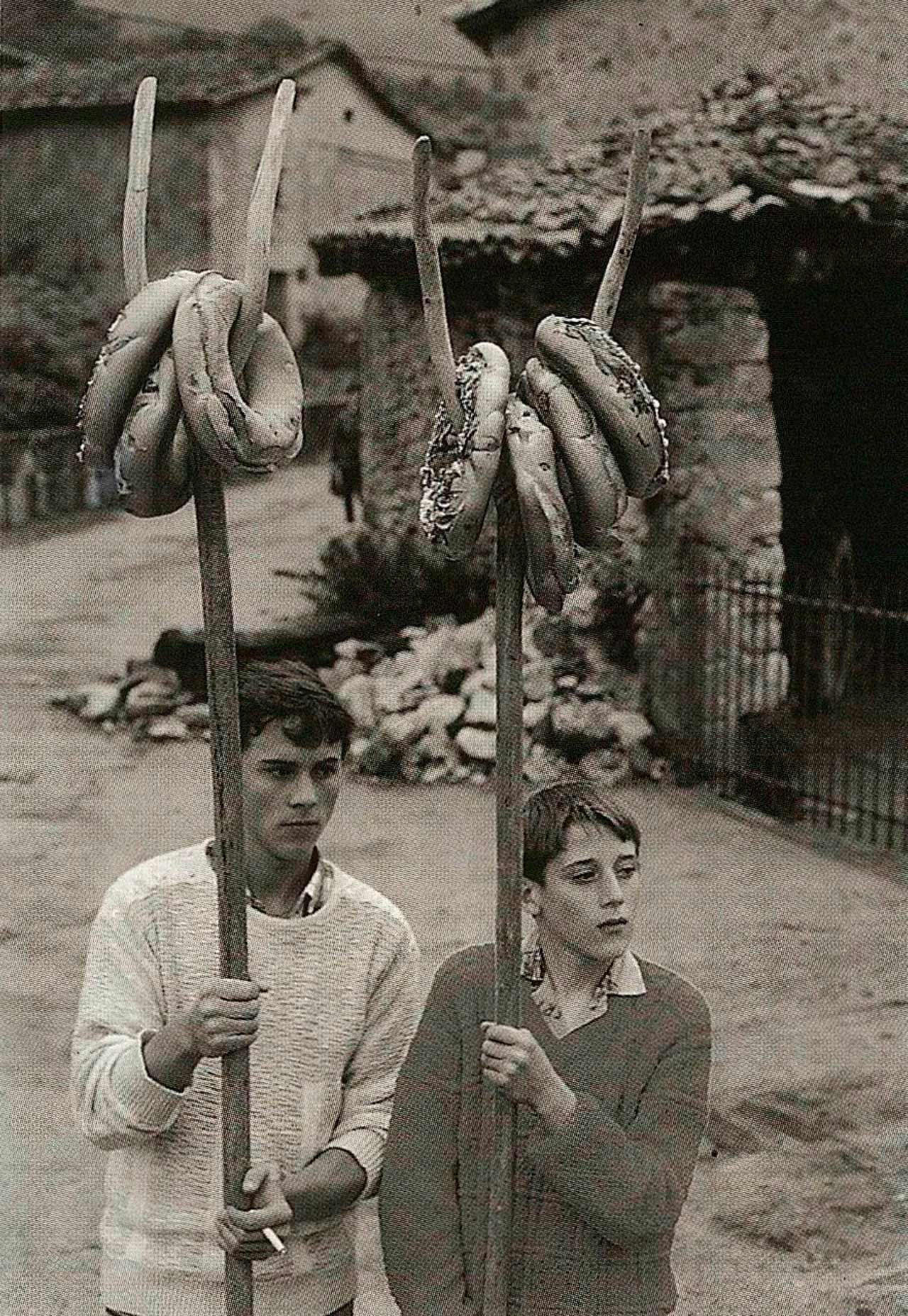

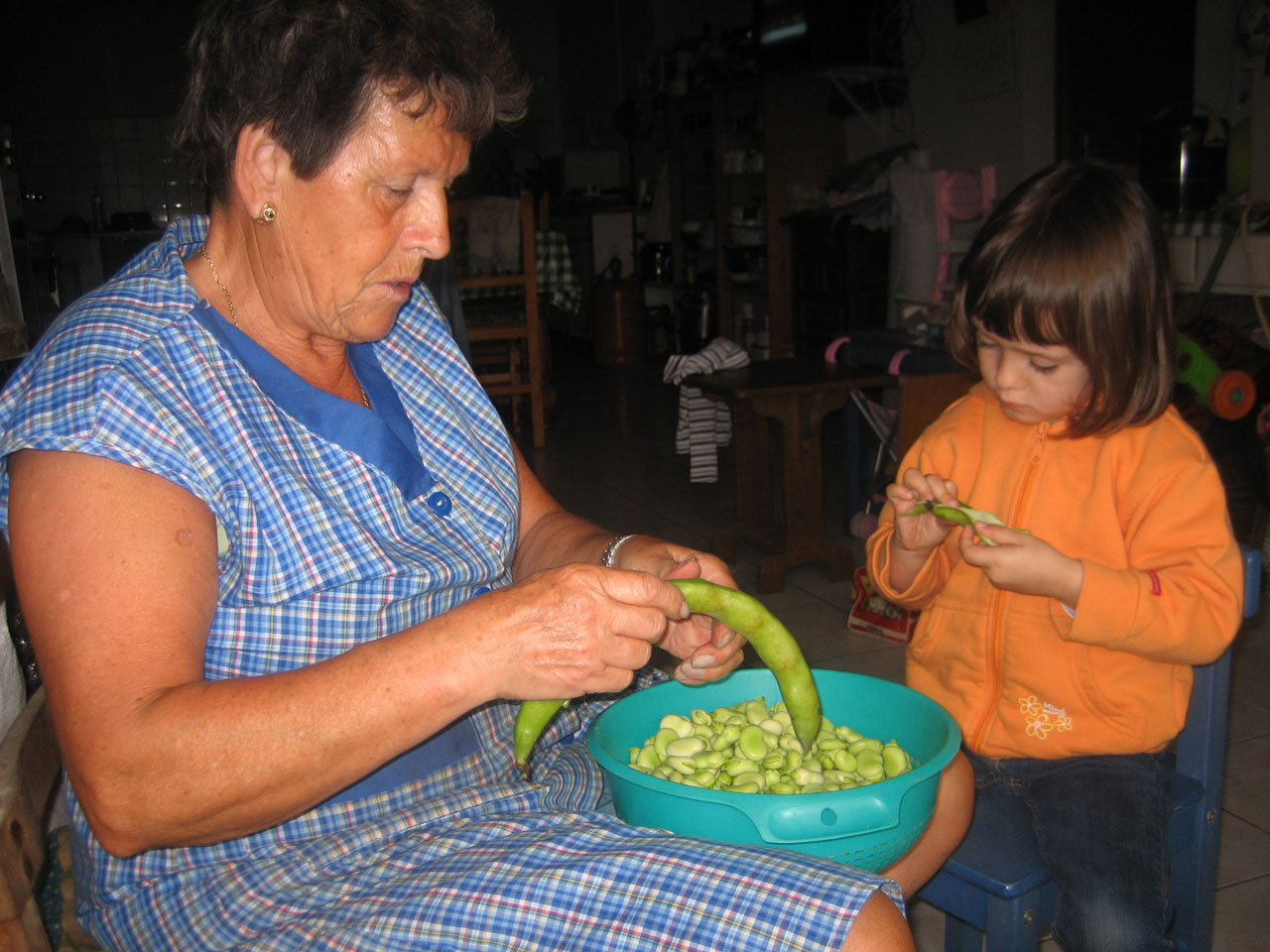
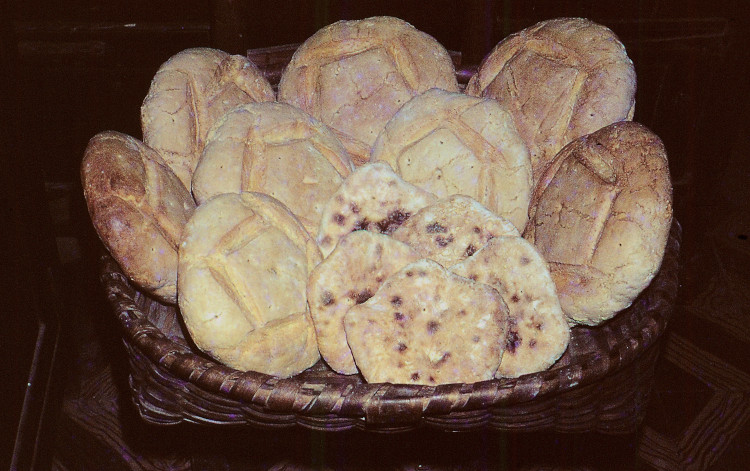
.jpg)
